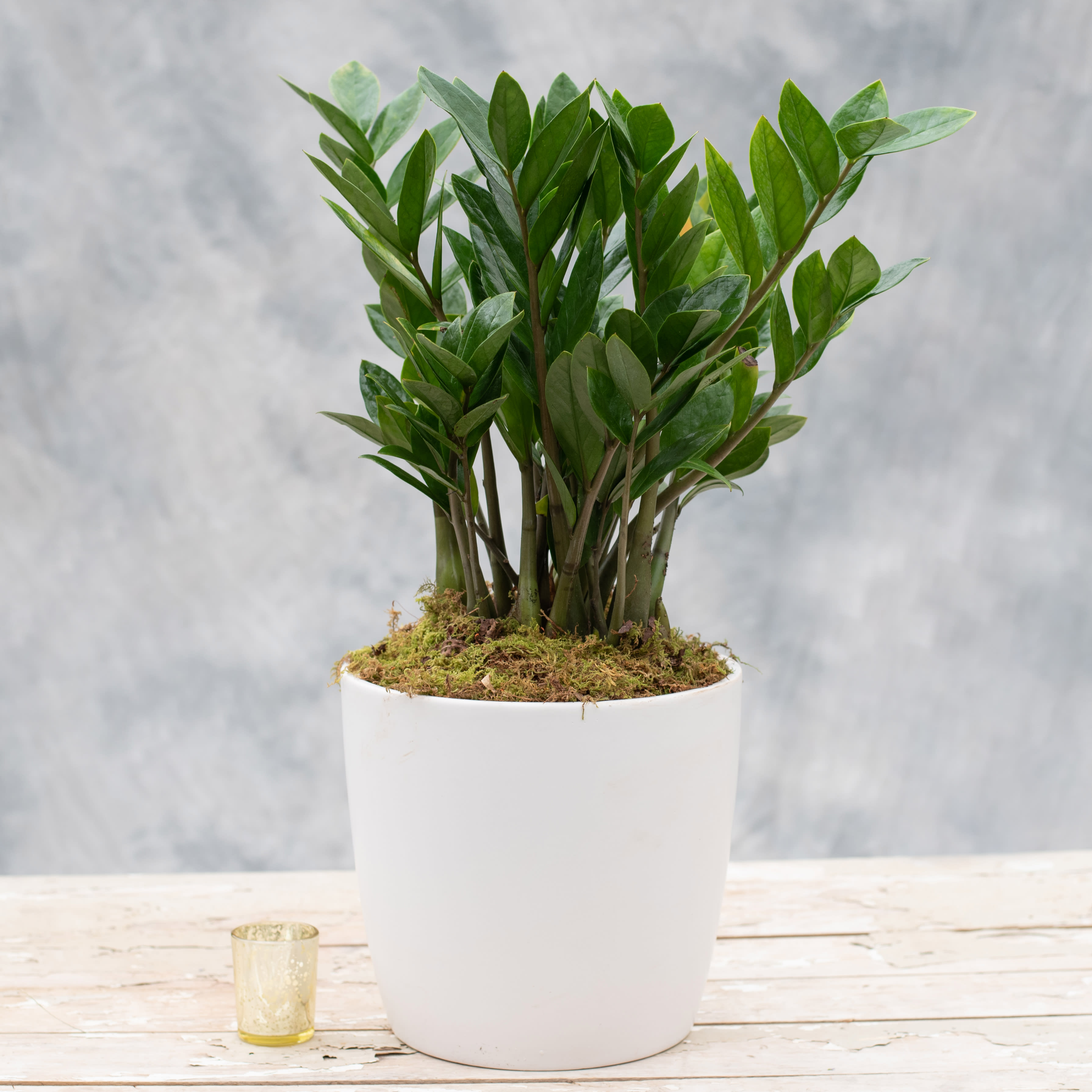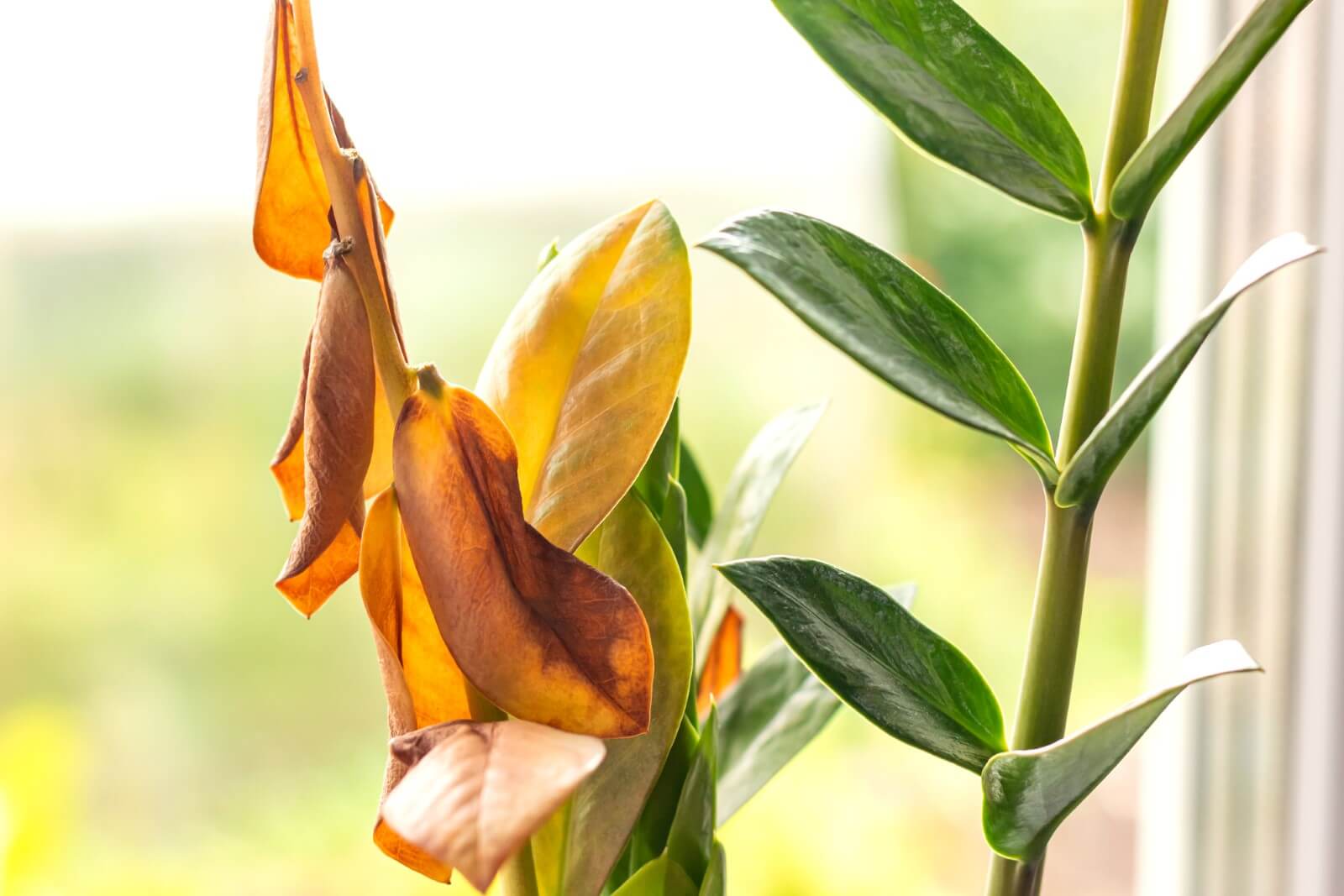ZZ plant curled leaves, a common issue among these popular houseplants, can be caused by a variety of factors, ranging from environmental stresses to pests and diseases. This comprehensive guide delves into the intricacies of ZZ plant care, identifying the underlying causes of curled leaves and providing effective treatment and prevention strategies.
Understanding the optimal growing conditions, proper watering techniques, and common problems associated with ZZ plants is crucial for maintaining their health and preventing leaf curling. By addressing these factors and implementing the appropriate measures, you can restore your ZZ plant to its former glory and ensure its continued vitality.
Plant Care and Maintenance

ZZ plants are known for their resilience and low maintenance requirements. However, providing optimal growing conditions and proper care can enhance their health and longevity.
ZZ plants thrive in bright, indirect light. Direct sunlight can scorch their leaves, while low light conditions can stunt their growth. Ideal temperatures range between 65-75°F (18-24°C). Avoid exposing them to temperatures below 50°F (10°C) or above 85°F (29°C).
Watering
ZZ plants are drought-tolerant and prefer infrequent watering. Allow the soil to dry out completely before watering again. Overwatering can lead to root rot, so it’s crucial to avoid keeping the soil constantly moist.
Fertilizing
Fertilize ZZ plants sparingly during the growing season (spring and summer) with a balanced liquid fertilizer diluted to half strength. Avoid over-fertilizing, as it can accumulate salts in the soil and damage the plant.
Repotting
ZZ plants grow slowly and do not require frequent repotting. Repot only when the plant becomes rootbound or the pot becomes too small. Use a well-draining potting mix specifically designed for succulents or cacti.
Common Problems
Pests
ZZ plants are generally pest-free, but they can be susceptible to mealybugs, spider mites, and aphids. Treat infestations promptly with insecticidal soap or neem oil.
Diseases
ZZ plants are not prone to many diseases. However, overwatering or poor drainage can lead to root rot. Remove any infected roots and repot the plant in fresh soil.
Nutrient Deficiencies
Yellowing leaves can indicate a nitrogen deficiency. Fertilize the plant with a balanced liquid fertilizer according to the manufacturer’s instructions.
Causes of Curled Leaves
ZZ plants are known for their hardiness and resilience, but even these low-maintenance plants can experience problems, including curled leaves. Curled leaves can be a sign of a variety of environmental factors, pests, or diseases. Here are some of the most common causes of curled leaves in ZZ plants, along with tips on how to differentiate between them.
One of the most common causes of curled leaves in ZZ plants is underwatering. When a ZZ plant is underwatered, the leaves will start to curl inward in an attempt to conserve moisture. Other signs of underwatering include dry, crispy leaves, and stunted growth. If you think your ZZ plant is underwatered, give it a thorough watering and see if the leaves start to perk up.
Another common cause of curled leaves in ZZ plants is overwatering. Overwatering can lead to root rot, which can cause the leaves to curl and turn yellow or brown. Other signs of overwatering include soggy soil, yellowing leaves, and stunted growth. If you think your ZZ plant is overwatered, let the soil dry out completely before watering it again.
Curled leaves can also be a sign of pests or diseases. Some of the most common pests that can affect ZZ plants include mealybugs, aphids, and spider mites. These pests can suck the sap from the leaves, causing them to curl and turn yellow. Other signs of pests include sticky residue on the leaves, webbing, and small insects crawling on the plant.
If you think your ZZ plant has a pest infestation, you can try to remove the pests by hand or with a cotton swab dipped in rubbing alcohol. You can also try using a commercial insecticide, but be sure to follow the directions carefully.
Curled leaves can also be a sign of diseases, such as bacterial leaf spot or fungal leaf spot. These diseases can cause the leaves to curl, turn yellow or brown, and develop spots. Other signs of diseases include wilting, stunted growth, and yellowing leaves.
If you think your ZZ plant has a disease, you can try to treat it with a commercial fungicide or bactericide. However, it is important to note that some diseases cannot be cured, so it is important to take steps to prevent them from occurring in the first place.
Treatment and Prevention: Zz Plant Curled Leaves

Treating and preventing curled leaves in ZZ plants involves addressing the underlying cause and implementing appropriate measures. Organic and chemical solutions are available, and preventative measures can help reduce the risk of recurrence.
Organic Solutions
- Adjust Watering: Overwatering is a common cause of curled leaves. Allow the soil to dry out completely before watering again, and ensure the pot has adequate drainage.
- Increase Humidity: Dry air can cause leaves to curl. Mist the plant regularly or place it on a pebble tray filled with water to increase humidity.
- Use Organic Fertilizers: Nutrient deficiencies can lead to curled leaves. Apply a balanced organic fertilizer once a month during the growing season.
- Control Pests: Pests like spider mites and aphids can cause curled leaves. Use organic pest control methods, such as neem oil or insecticidal soap.
Chemical Solutions
- Use Chemical Insecticides: If organic pest control methods fail, consider using chemical insecticides specifically designed for the type of pest affecting the plant.
- Apply Fungicides: Fungal infections can cause curled leaves. Apply a fungicide according to the manufacturer’s instructions.
Preventative Measures, Zz plant curled leaves
- Proper Watering: Avoid overwatering and ensure the soil drains well.
- Maintain Humidity: Provide adequate humidity by misting the plant or using a pebble tray.
- Regular Fertilization: Fertilize the plant regularly with a balanced fertilizer.
- Pest Control: Regularly inspect the plant for pests and take appropriate action to control them.